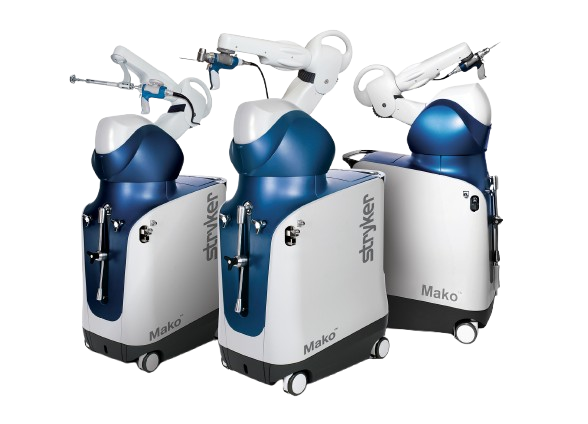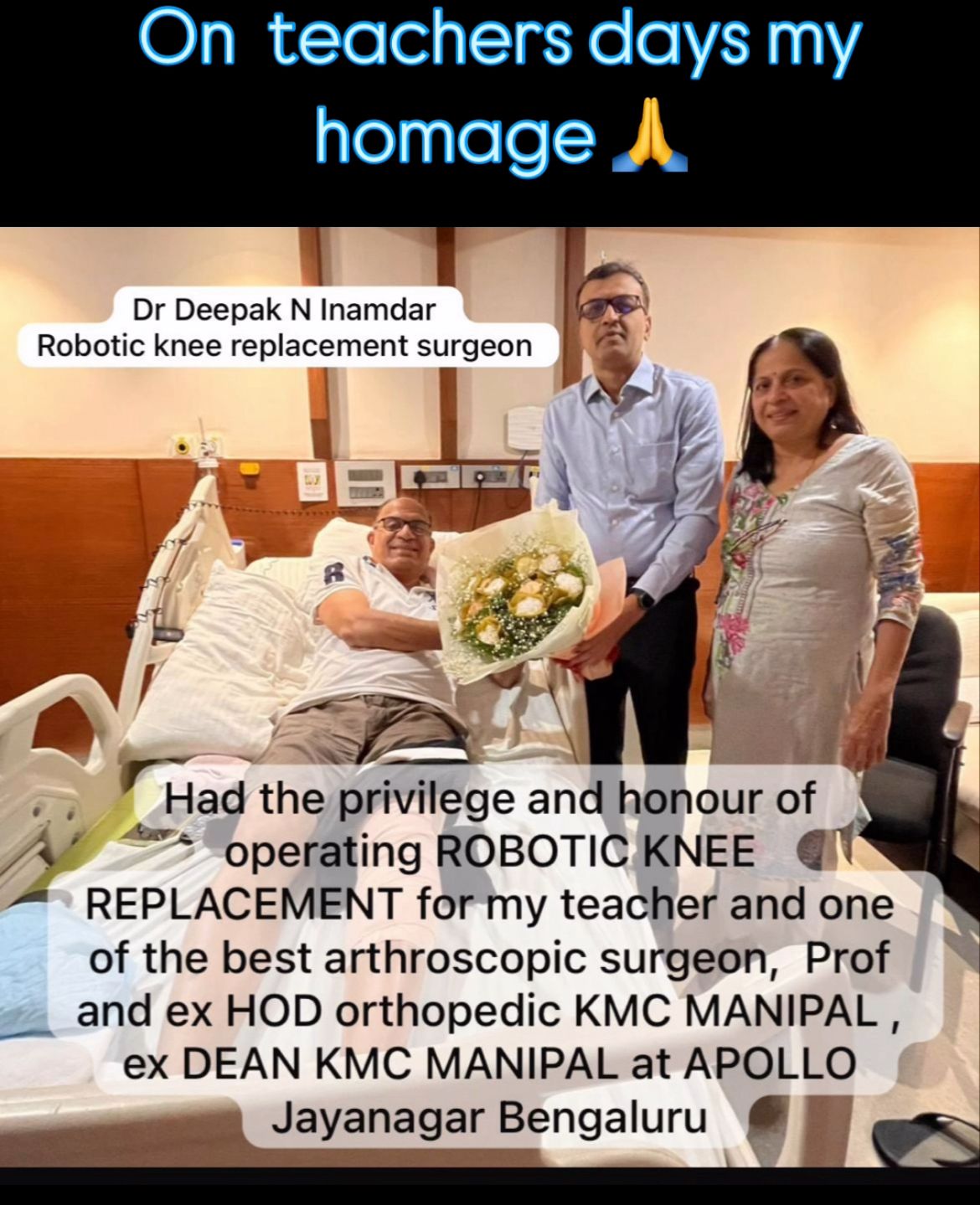Mako Robotic Knee Replacement?
Mako robotic knee replacement is an advanced, minimally invasive surgical procedure that uses robotic-assisted technology to achieve precise, personalized knee joint replacement. Unlike traditional knee replacement, which relies mainly on manual alignment, Mako uses a 3D virtual model of your knee to plan and execute the surgery with the highest accuracy.
How It Works
- Pre-Surgical Planning: A CT scan or 3D imaging of your knee is used to create a detailed virtual model. This allows your surgeon to plan the exact size, position, and alignment of the implant.
- Robotic Assistance During Surgery: The surgeon uses the Mako robotic arm to guide bone preparation and implant placement. The robot provides real-time feedback but does not replace the surgeon — every movement is controlled by the expert surgeon.
- Precision Implant Placement: The system ensures that the implant matches your anatomy, reduces errors, and improves the overall function and longevity of your knee.
AREA OF EXPERTISE
- Robotic and non-robotic knee replacement surgery
- Fracture surgery of upper and lower extremities
- Geriatric hip fracture surgery
- Knee arthritis treatment
Specialized Surgery
Mako uses a 3D virtual model of your knee to plan and execute the surgery with unmatched accuracy. Every cut, implant placement, and alignment is customized to your anatomy, minimizing errors and optimizing long-term results.
Recovery After Surgery
Patients often experience:
- Less pain and swelling
- Faster rehabilitation
- Improved mobility and joint function
- Shorter hospital stay compared to conventional knee replacement
Your recovery plan will be tailored to your health, activity level, and type of implant used.

How Is It Different From Regular Knee Replacement?
Unlike conventional surgery, where the surgeon relies mainly on experience and manual tools:
- Mako provides real-time feedback during surgery
- Implant placement is precisely aligned to your knee anatomy
- Minimal damage to surrounding tissues, preserving natural ligaments
- Better overall outcomes and longevity of the implant
Are All Robotic Systems Equal?
No. Robotic knee systems differ in precision, planning software, and intra-operative guidance. Mako is considered one of the most advanced, offering reliable results backed by global studies.
- Accuracy: Mako gives very precise guidance for cutting bones and placing implants.
- Planning: It uses a 3D model of your knee to plan surgery specifically for you.
- Safety: The robot provides real-time feedback to help the surgeon stay on track.
- Versatility: Mako can be used for primary, partial, and revision knee replacements.
- Proven Results: Studies show Mako improves implant alignment, recovery, and long-term outcomes.
Why Mako?
- Personalized surgery based on your anatomy
- Precise implant placement for natural movement
- Minimally invasive approach for faster recovery
- Reduced risk of revision surgery
Why Choose Mako With Dr. Deepak N. Inamdar?
Dr. Deepak N. Inamdar is a renowned orthopedic and robotic joint replacement surgeon with over 20 years of experience and more than 6,000 successful surgeries.
He operates at the state-of-the-art Robotic Joint Replacement Center at Apollo Speciality Hospitals, Jayanagar, Bengaluru, and sees outpatients at OrthoFirst Orthopaedic and Joint Replacement Center.
Expertise includes:
- Robotic & conventional knee and hip replacements
- Complex and revision joint replacement surgeries
- Trauma surgeries for pediatric, adult, and geriatric patients
Patient benefits:
- Precise, personalized implant placement
- Minimally invasive surgery for faster recovery
- Guidance on all advanced implants, including Oxinium and High-Flex knees
- Comprehensive care from consultation to rehabilitation

Dr. Deepak combines experience, global training, and advanced robotic technology to ensure safe, accurate, and long-lasting outcomes for every patient.
Why the Hospital Matters (Distance Doesn’t)
Mako robotic knee replacement requires a specialized operation theatre with laminar air flow and a trained surgical team. The right hospital ensures:
- Precise and safe surgery using robotic technology
- Better infection control and reduced complications
- Access to advanced implants and rehabilitation facilities
Tip : Choosing a hospital with the proper infrastructure is more important than how close it is to your home.
Insurance Coverage
Most major insurance plans cover Mako robotic knee replacement, similar to conventional knee replacement procedures. Coverage may vary depending on your policy, so it’s important to check the details in advance.
Our team will assist you with pre-authorization, documentation, and claim submission to make the process smooth and hassle-free. This ensures you can focus on your surgery and recovery without worrying about paperwork.
With proper insurance support, patients can access advanced robotic knee replacement technology while minimizing out-of-pocket expenses.
Process to Undergo Mako Knee Replacement
- Consultation & Assessment – Review your knee condition, imaging, and health history
- Pre-operative Planning – 3D modeling of your knee to customize surgery
- Surgery Day – Robotic-assisted procedure with precise implant placement
- Post-operative Care & Rehabilitation – Personalized recovery plan for best outcomes
Is Both Knees Done Together?
Yes, bilateral knee replacement (both knees at the same time) is possible for patients who are healthy enough and meet certain medical criteria.
The decision depends on factors such as:
- Age – younger, fit patients recover faster.
- Overall health – heart, lungs, and other conditions are evaluated.
- Strength and fitness level – to tolerate anesthesia and post-surgery rehabilitation.
When both knees are replaced together, patients may benefit from a single hospitalization and coordinated recovery, but your surgeon will recommend what’s safest for you.
Take the first step toward pain-free mobility. Book your Mako Robotic Knee Replacement consultation with Dr. Deepak N. Inamdar today.
Thinking About Joint Replacement Surgery? Get Expert Opinion from Dr. Deepak Inamdar!
